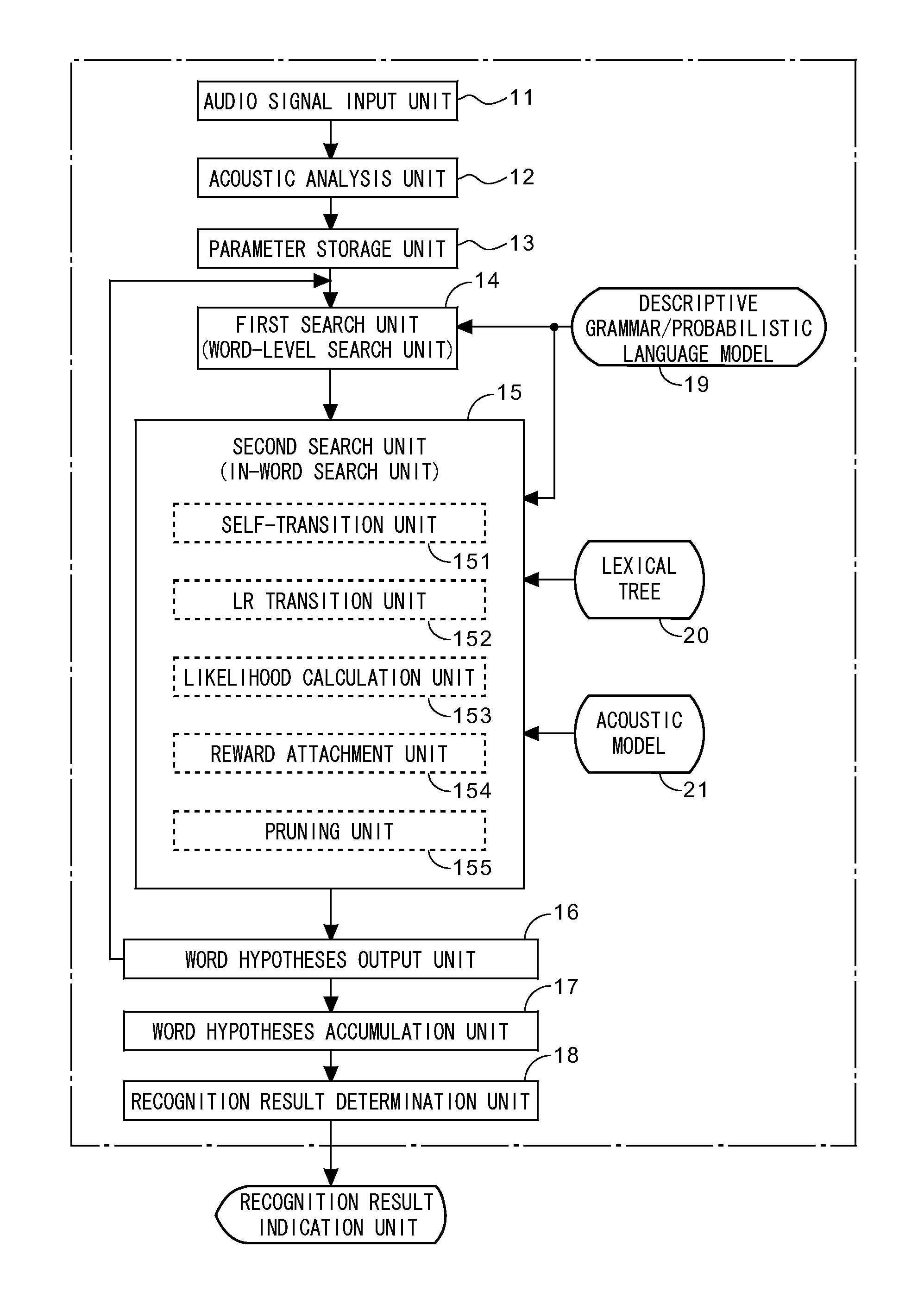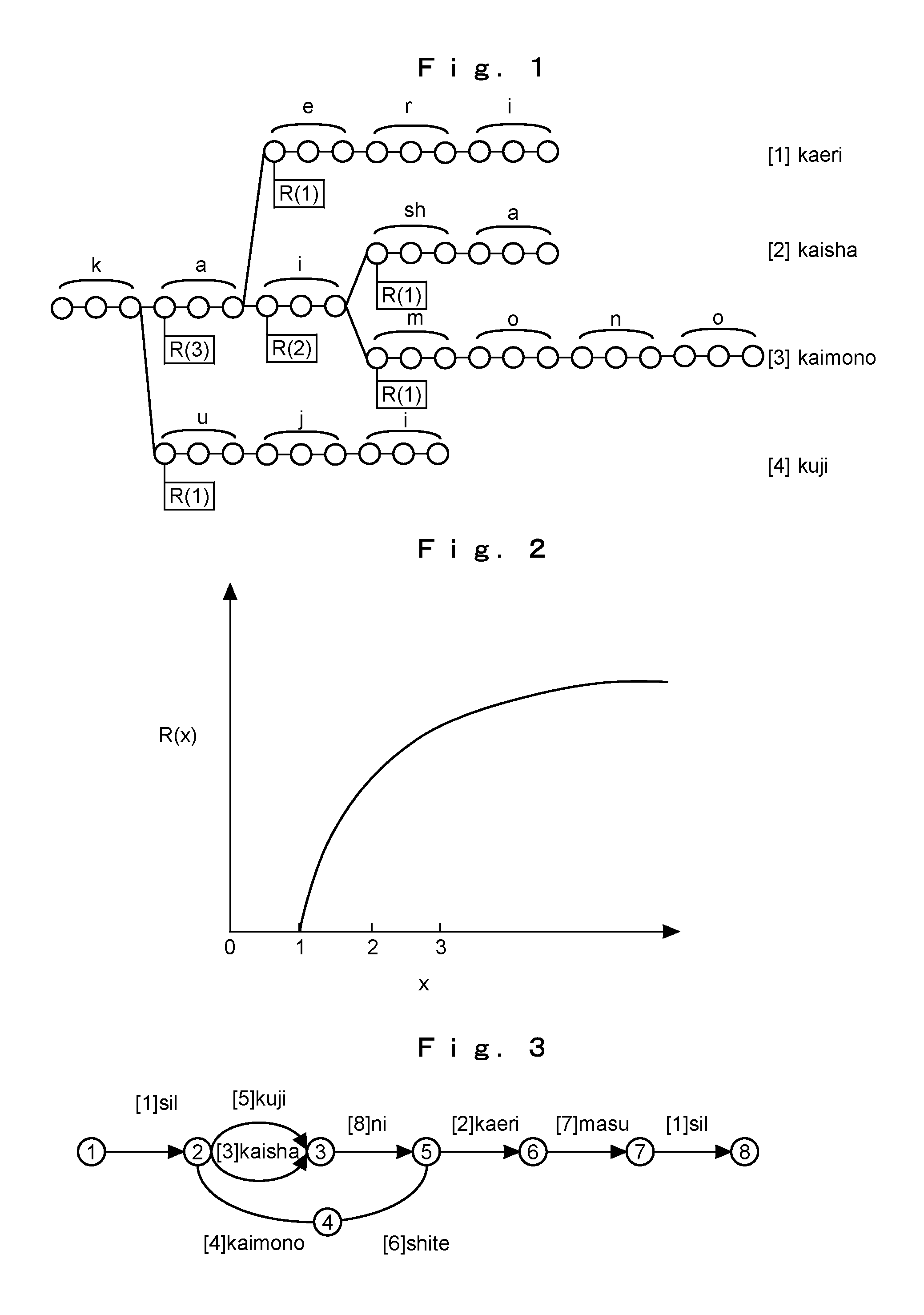Method and equipment of pattern recognition, its program and its recording medium for improving searching efficiency in speech recognition
a pattern recognition and pattern technology, applied in the field of pattern recognition, can solve the problems of destabilizing performance, unable to use speech recognition based techniques, and explosive increase in partial hypotheses, and achieve the effect of efficiently pruning partial hypotheses without lowering the recognition ra
- Summary
- Abstract
- Description
- Claims
- Application Information
AI Technical Summary
Benefits of technology
Problems solved by technology
Method used
Image
Examples
Embodiment Construction
[0045]An embodiment of the present invention will be described below in detail with reference to drawings. First, a basic idea of the present invention will be described and then, an embodiment thereof will be described in detail with reference to a block diagram and a flow chart.
[0046]A tree structure in which a recognition pattern is represented by a path leading from a root node to a plurality of leaf nodes is constituted of a small number of a root node and nodes near the root node that can reach a large number of leaves and a large number of nodes from which the reachable leaf is determined or for which the number of reachable leaves is limited to several leaves.
[0047]Partial hypotheses to be pruned include a small number of partial hypotheses present in nodes near the root and a large number of partial hypotheses present in nodes near leaves. If an effect of pruning is considered, pruning most of the small number of partial hypotheses near the root has a great influence becaus...
PUM
 Login to View More
Login to View More Abstract
Description
Claims
Application Information
 Login to View More
Login to View More - R&D
- Intellectual Property
- Life Sciences
- Materials
- Tech Scout
- Unparalleled Data Quality
- Higher Quality Content
- 60% Fewer Hallucinations
Browse by: Latest US Patents, China's latest patents, Technical Efficacy Thesaurus, Application Domain, Technology Topic, Popular Technical Reports.
© 2025 PatSnap. All rights reserved.Legal|Privacy policy|Modern Slavery Act Transparency Statement|Sitemap|About US| Contact US: help@patsnap.com



